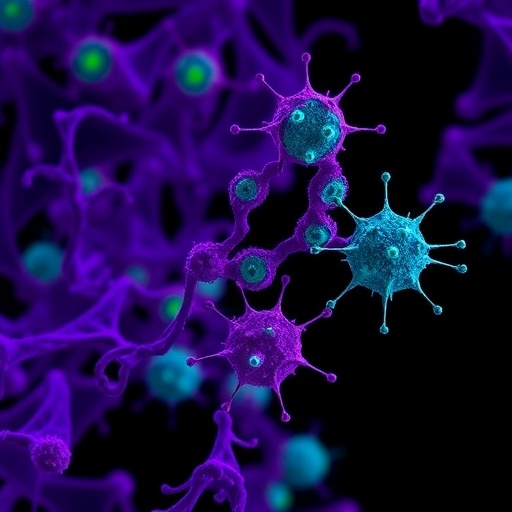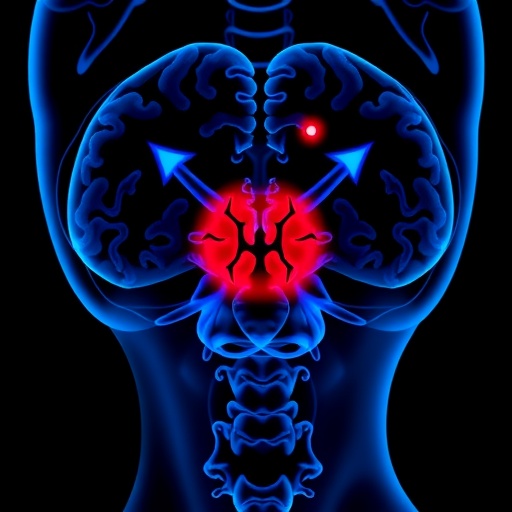In the relentless quest to conquer cancer, researchers continuously strive to unlock new avenues for effective treatment strategies. A recent breakthrough study has shed light on the potent anticancer properties of nerolidol, a naturally occurring compound, both alone and in combination with cyclophosphamide, a well-established chemotherapeutic agent, against the widely studied MCF-7 breast cancer cell line. This dual approach offers a compelling new direction for breast cancer therapy, with implications that could potentially transform the way oncologists approach combination treatments for malignancies.
Cyclophosphamide is a cornerstone chemotherapeutic used worldwide, particularly in breast cancer management. Its effectiveness arises from its ability to interfere with DNA replication, ultimately leading to cell death. Yet, the severe side effects and the development of resistance have directed scientists towards exploring combinations of conventional drugs with natural agents to enhance efficacy and minimize toxicity. The recent study meticulously investigates the combined use of nerolidol with cyclophosphamide, probing whether their synergistic effect can improve treatment outcomes against breast cancer cells.
.adsslot_TpAQ6B2uhV{ width:728px !important; height:90px !important; }
@media (max-width:1199px) { .adsslot_TpAQ6B2uhV{ width:468px !important; height:60px !important; } }
@media (max-width:767px) { .adsslot_TpAQ6B2uhV{ width:320px !important; height:50px !important; } }
ADVERTISEMENT
The experimental results have been striking. When applied individually, both nerolidol and cyclophosphamide induced notable cytotoxicity in MCF-7 cells. However, their combination produced a substantially enhanced anticancer effect that exceeded the sum of their separate impacts. This synergism likely results from nerolidol’s ability to amplify cyclophosphamide-induced oxidative stress and DNA damage within cancer cells. By intensifying the intracellular generation of reactive oxygen species (ROS), the combination triggers apoptotic pathways more effectively, offering a strategic advantage in cancer eradication.
At the molecular level, the combined treatment was observed to modify key regulatory proteins that govern apoptosis and cell cycle progression. For instance, there was an upregulation of pro-apoptotic proteins such as Bax and downregulation of anti-apoptotic proteins like Bcl-2. These alterations tilt the balance decisively towards programmed cell death, attenuating tumor cell survival. Moreover, the treatment induced cell cycle arrest at the G2/M phase, a critical checkpoint where cells halt division to repair DNA or proceed to apoptosis if damage is irreparable.
Another pivotal aspect of the study was the examination of intracellular signaling pathways. The nerolidol-cyclophosphamide duo appeared to modulate the PI3K/Akt pathway, frequently implicated in tumorigenesis and chemoresistance. Inhibition of this pathway compromises cancer cell survival and proliferation, sensitizing them to chemotherapeutic agents. Therefore, targeting PI3K/Akt signaling may overcome resistance mechanisms common in aggressive breast cancer forms, signifying the importance of this combined pharmacological approach.
The significance of this research transcends the immediate context of breast cancer. By employing a naturally derived compound alongside established chemotherapy, it paves the way for novel combinatorial frameworks in oncotherapy that emphasize maximizing efficacy while mitigating adverse effects. Given nerolidol’s relatively low toxicity profile and widespread availability, its integration into treatment regimens could offer a more patient-friendly alternative to high-dose chemotherapy protocols.
Beyond the primary cellular effects, nerolidol’s role as a membrane permeabilizer may also facilitate enhanced intracellular delivery of cyclophosphamide, thereby increasing its cytotoxic potential. This biophysical property makes nerolidol an intriguing candidate for adjuvant therapy, enhancing drug uptake in tumor cells and reducing required dosages. Such improvements in drug delivery could revolutionize chemotherapy by minimizing systemic toxicity and improving therapeutic indices.
Breast cancer remains one of the leading causes of cancer-related morbidity and mortality among women globally. Despite significant advances in early detection and targeted therapies, resistance to treatment and recurrence pose ongoing challenges. The integration of natural compounds like nerolidol with traditional chemotherapy offers renewed hope by exploiting the multi-targeted action of phytochemicals. It aligns with the emerging paradigm of combining biocompatible agents to thwart cancer’s adaptive survival mechanisms.
From a translational perspective, such combinatory approaches require thorough exploration in vivo and clinical settings to ascertain optimal dosing, pharmacokinetics, and long-term safety profiles. However, the promise demonstrated in vitro is a vital stepping stone. It raises pertinent questions about nerolidol’s effectiveness across other breast cancer subtypes and its potential role in conjunction with other chemotherapeutics or even emerging immunotherapies.
Moreover, the antioxidant properties of nerolidol, paradoxically working in concert with pro-oxidant chemotherapy to sensitize tumor cells, invite a nuanced understanding of redox dynamics in cancer cells. The delicate balance between oxidative stress and antioxidant defenses can be manipulated to tip cancer cells into apoptosis without harming normal tissues. Such specificity is the holy grail of cancer treatment.
Neoadjuvant and adjuvant therapy strategies may particularly benefit from such innovations. By reducing tumor burden before surgery or eliminating residual cells afterward, nerolidol-enhanced chemotherapy could improve surgical outcomes and decrease relapse rates. Patients might experience fewer side effects, better quality of life, and improved survival statistics with such refined interventions.
Importantly, the study’s insights into cell cycle arrest complement other targeted therapies that seek to disrupt cancer cell proliferation rhythms. Synchronizing nerolidol’s effects with other agents that act in different phases of the cell cycle might facilitate highly effective multi-modal treatment protocols, reducing the likelihood of resistant clones arising.
In conclusion, the combination of nerolidol and cyclophosphamide against MCF-7 breast cancer cells signifies a promising frontier in oncological research. By harnessing a natural compound with established chemotherapeutics, researchers have identified a compelling synergy that maximizes cell death, disrupts vital survival pathways, and impedes cancer cell division. As research advances, this could herald a new era where natural and synthetic agents converge to deliver safer, more potent, and more personalized cancer treatments.
This paradigm not only broadens our understanding of cancer biology but also invigorates the drug discovery landscape with eco-friendly, sustainable possibilities. Further research, clinical trials, and interdisciplinary collaboration will be essential in translating these findings from bench to bedside, ultimately fulfilling the urgent need for innovative breast cancer therapies that can save lives and provide hope worldwide.
Subject of Research: Anticancer efficacy of nerolidol and cyclophosphamide against breast cancer cell line MCF-7
Article Title: Anticancer efficacy of nerolidol, cyclophosphamide, and their combination against breast cancer cell line MCF-7
Article References:
Tousif, M., Nadeem, M., Tabassum, M. et al. Anticancer efficacy of nerolidol, cyclophosphamide, and their combination against breast cancer cell line MCF-7. Med Oncol 42, 430 (2025). https://doi.org/10.1007/s12032-025-02997-7
Image Credits: AI Generated
Tags: breast cancer management advancementschemotherapy resistance solutionscombination therapies for malignanciescyclophosphamide breast cancer treatmentcytotoxic effects of nerolidolinnovative breast cancer therapiesMCF-7 cancer cell line researchnatural compounds in cancer treatmentnerolidol anticancer propertiespharmacological merits of nerolidolplant-derived compounds in oncologysesquiterpene alcohols and cancer





